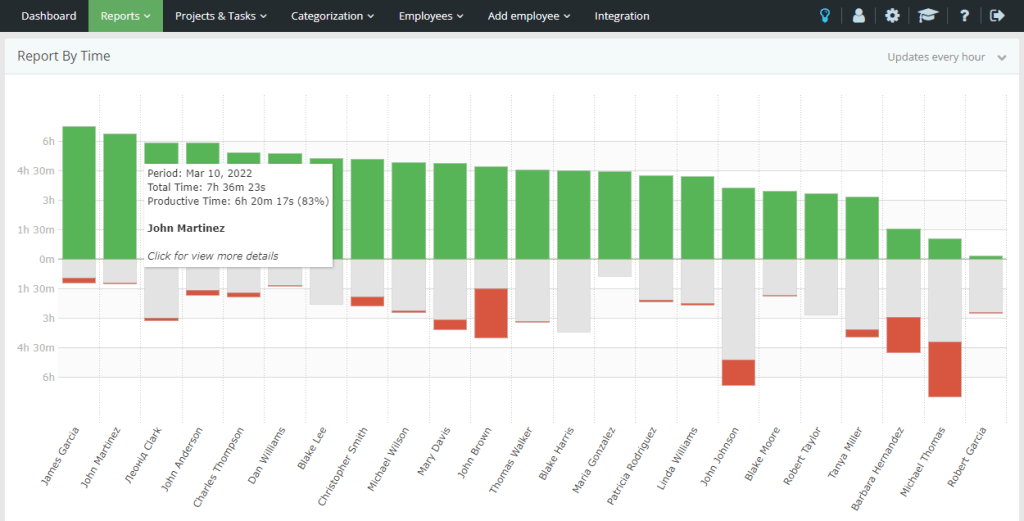Why Most Employees Initially Resist Time Tracking
Let's be honest – when companies first mention time tracking, most employees immediately think “Big Brother is watching.” It feels invasive, controlling, and frankly unnecessary if you're already doing your job well. This reaction makes perfect sense because traditional monitoring often focused on catching people doing things wrong rather than helping them work better.
But here's what's changed: modern time tracking isn't about surveillance. It's become a tool that benefits employees as much as employers, sometimes even more. The data tells a different story than what most people expect.
How Time Tracking Actually Protects Employee Boundaries
Remote work created a sneaky problem that nobody talks about enough. When your office is also your kitchen table, work starts bleeding into everything else. Suddenly you're answering emails at 9 PM, finishing “just one more task” after dinner, or working through weekends because the boundaries disappeared.
Time tracking software creates a digital fence around your work hours. When you can see exactly how much you've worked, it becomes much easier to say “I'm done for today” and actually mean it. Research from Stanford shows that employees with clear time boundaries report 40% less burnout and significantly better mental health outcomes.

The transparency works both ways too. When managers can see that someone put in a solid 8-hour day, they're less likely to pile on additional requests or expect immediate responses to late-night messages.
What Happens When You Can See Your Own Work Patterns
Most people have no idea how they actually spend their workday. Ask someone what they did yesterday and you'll get a vague answer about meetings, emails, and “some project work.” But time tracking reveals patterns that can be genuinely surprising, often showing disconnects between perceived and actual productivity patterns.
The most common discoveries employees make about their work habits typically fall into these categories:
- Peak productivity windows that don't match their assumptions
- Hidden time drains consuming hours without delivering value
- Task switching frequency that fragments deep focus periods
- Communication overhead taking up more time than core work
- Energy patterns that correlate with specific types of activities
These insights fundamentally change how people approach their workday, leading to more strategic decisions about when to tackle different types of tasks and how to structure their schedule for maximum effectiveness.
How Data Changes Performance Conversations
Traditional performance reviews often feel like guesswork mixed with politics. “I feel like I'm working hard” meets “I need to see better results” without much concrete evidence on either side. Time tracking data transforms these conversations from subjective opinions into objective discussions about reality.
When you can show that you completed 47 client projects in Q3 with an average turnaround time of 2.3 days, the conversation shifts. Instead of defending your work ethic, you're discussing how to optimize processes or redistribute workload more effectively.
Employees consistently report feeling more confident in salary negotiations and promotion discussions when they have concrete productivity data to reference. It's hard to argue with numbers that clearly demonstrate value delivered.
The Unexpected Psychology of Visible Progress
There's something powerful about seeing your accomplishments accumulate in real-time. Traditional work often feels like a hamster wheel – lots of effort with little visible progress. Time tracking creates a digital record of achievement that many employees find surprisingly motivating, transforming abstract effort into concrete evidence of contribution.
Key psychological benefits that emerge from progress visibility include:
- Increased motivation from seeing daily accomplishments add up
- Reduced imposter syndrome through concrete performance evidence
- Better work satisfaction from recognizing completed achievements
- Enhanced confidence during performance reviews and negotiations
- Stronger sense of professional identity based on measurable contributions
This visibility often leads to what psychologists call “progress pride” – satisfaction from seeing concrete evidence of your contributions, which creates positive reinforcement loops that naturally improve both productivity and job satisfaction.
Building Trust Through Transparency
The companies getting time tracking right are using it to build trust, not destroy it. When employees have full access to their own data and understand exactly how it's being used, monitoring becomes collaboration instead of surveillance.
Smart managers share aggregated team data that helps everyone understand workload distribution and identify bottlenecks. When someone is consistently working 50-hour weeks while others average 35, that's a resource allocation problem, not a performance issue.
Ready to experience time tracking that actually works for you? Tools like Yaware.TimeTracker focus on employee empowerment rather than micromanagement. You get insights into your own productivity patterns while maintaining control over your data and work style.
The best time tracking implementations feel less like monitoring and more like having a personal productivity coach who never judges, only provides helpful insights for making your workday more effective and satisfying.

